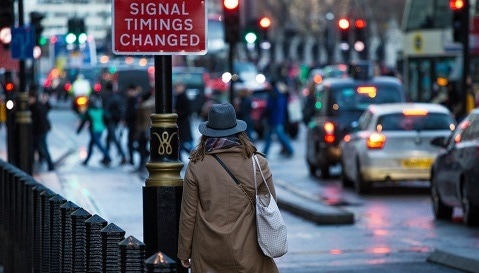Reviewed by Mila PereraOct 31 2022
Over 24 trillion microplastic particles are floating on the surface of the oceans, and it is thought that urban areas may gather up to 700 microplastic particles per square meter every day. Cities are the primary source of these particles.

Image Credit: Universitat Autònoma de Barcelona
However, because of the practical difficulties and high economic expense of sampling, identifying, and characterizing these substances, the absence of concrete investigations prevents an accurate knowledge of their prevalence in the urban environment.
The Plasticker project has been initiated by scientists from the Institute of Environmental Science and Technology at the Universitat Autònoma de Barcelona (ICTA–UAB) and the Cartographic and Geological Institute of Catalonia (ICGC) to provide comprehensive information on the presence of these microparticles in cities.
Scientists have created a simple and inexpensive sampling method, thanks to the assistance of the UAB Research Park’s 12th Ideas Generation Programme; a 100% biodegradable adhesive that, when stuck to an urban surface like playgrounds, street furniture, or sidewalks, gathers the particles lying on them. It will be possible to characterize and measure microplastics in cities by analyzing these samples in the laboratory.
Although the main route for these pollutants to reach the marine environment are rivers, they find their origin in urban centers due to high-density anthropogenic activities.
Michaël Grelaud, Researcher, Institute of Environmental Science and Technology, Universitat Autònoma de Barcelona
Each inhabitant releases over 2.5 kg of microplastics into the environment annually, according to Michaël Grelaud.
These microplastics are primarily derived from tire abrasion (50.5%) and plastic on road surfaces (9.4%), with the remainder coming from plastic pellets (7.4%), transportation and waste treatment (6.8%), abrasion of sports surfaces (5.3%), construction, shoe abrasion, plastic packaging, road paint, and textile friction in washing machines.
Prolonged exposure to this pollution may also endanger human health.
Microplastics can interact with the human body through three main routes: inhalation, ingestion, and skin contact. Several studies have already shown that microplastics were able to cause serious impacts on human health including physical stress and damage, inflammation, or immune responses.
Andrea Vidal Durà, Soil Technician, Cartographic and Geological Institute of Catalonia
Understanding the origin and levels of microplastics in the daily environments is critical for scientists to determine how to address this pollution problem that directly impacts the health of people and ecosystems. As a result, creating the Plasticker approach is a step forward in minimizing such pollution and establishing more sustainable, microplastic-free spaces.
The aim is for cities to become spaces where we can touch, breathe and eat without being exposed to this invisible pollution.
Michaël Grelaud, Researcher, Institute of Environmental Science and Technology, Universitat Autònoma de Barcelona
To pursue this project, the UAB has established the crowdfunding campaign “Plasticker: the urban microplastic tracker,” intending to raise 10,000 euros for the development of materials and methods, as well as the beginning of the sampling and accompanying analysis phase in the laboratory.